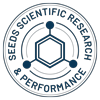Maximizing Healthspan Through Cellular Adaptation
Table of Contents
Unlock access to this full article with SSRP Membership.
The Yin and Yang of Homeostasis
As you may recall, homeostasis is a word we use in biology, molecular biology, and cellular medicine to describe when a person is in a normal – or balanced – state of health. As humans, this innate drive for homeostasis drives almost every process in the body at the cellular level.
Redox offers us a good example of how homeostasis works. As we’ve discussed numerous times in masterminds, rabbit holes, office hours, and, of course, in my second book, The Redox Promise, energy metabolism, cellular functioning, and immune system modulation all depend on redox balance. The constant interplay between reduction and oxidation activities comprises an ongoing effort that all cells participate in – to both generate energy for optimal functioning and protect these same systems from stressors that either upset the balance or overwhelm the immune system’s capacity for protection.
I sometimes refer to this quest for balance as the yin yang effect: we need both oxidation and reduction processes for cell metabolism and functioning. When one gets compromised or is dysregulated, the other suffers and vice versa. There are always stressors that threaten the equilibrium of cell environments, thereby undermining energy production, TCA metabolism, beta oxidation metabolism, and amino acid metabolism. For example, if the body is exposed to a virus, the cell system has some decisions to make about how to direct its energy. A first defense will be a call for antioxidants to handle the increase in reactive oxygen species produced by the cell in reaction to the stressor (i.e., the virus). If, however, the individual has been sick with a virus – something like COVID – in a two-or three-month prior period, their antioxidant system may be depleted. Without a strong antioxidant response, oxidative stress will increase, perhaps exacerbating lingering inflammation. In short, the innate immune response is less than energetic because of a low availability of reducing agents (such as superoxide dismutase, catalase, glutathione) to handle the pathogen’s direct and indirect causation of cellular ROS, so the body becomes ill, falling out of homeostasis.
And yet, despite these less-than neutral conditions, the body persists in its drive for homeostasis. The mechanism at the heart of this drive?
Adaptation.
Adaptation is not merely a term to describe the evolution of species and traits within species; it also refers to a continual activity that all cells and tissues engage in in response to any kind of stressor – whether endogenous or exogenous – that can threaten its status quo and push it into a disrupted state. Adaptation begins like an automatic impulse responding to a stressor – lack of sleep, exposure to a toxin, alcohol inundation, viral contagion– prompting the cells to figure out how to get themselves back into a steady state.
Again, let’s look at redox. If in the case of a viral overload and a depleted antioxidant system, what else will the body do to get itself back into balance, whereby reducing agents and oxidizing agents can be restored and once again work in more or less harmony?
Let’s imagine you’re a cell that’s been knocked out of balance. You will ask yourself, How do I get back to that state of homeostasis? How do I adapt to what I’ve just been presented to me? What can I do to manipulate the situation and get back to that homeostatic pattern?
First, you will naturally produce more energy to handle the cellular changes necessary to drive the production of cytokines chemokine and proteases to deal with the virus. This will also demand the cell to adapt to this increase in energy requirements and increase production of antioxidants.
Or you might take matters into your own hands and take a high dose of Vitamin C ( a scavenger antioxidant) and go to bed to rest – this proactive step being another reminder for all of us healthcare providers to help our patients become aware of the importance of nutrition, supplements, and peptides that can benefit them when they get sick. Talking about such situations explicitly with patients also helps them understand the big picture dynamics of cellular adaptation.
The next time the cell is under attack by a similar virus it will be more resilient to infection because it adapted to the insult before and is now more on alert and ready to act in concert with the immune system.
Building Cellular and Systemic Resilience: Stepping Stones to Optimal Healthspan
In this way, adaptation is a process that can be harnessed to build cellular and systemic resilience and work toward optimal healthspan. If we make a cell more resilient to any number of factors that have the potential to set things off the pace of homeostasis, then we’re doing things to make the cell adapt better to those stressors – and maintaining that equilibrium in the cell environment.
How can we be more proactive? In some ways, these strategies are quite simple: getting sufficient sleep; regular exercise; and meditation – are all productive ways that have immediate, beneficial cellular effects. You might be surprised that I, of all people, recommend meditation – probably because you can’t imagine me sitting cross legged on a yoga cushion. But keep in mind that meditation comes in many forms – for you that may be walking for twenty minutes, for another person it may take the form of a tai chi class; for me, it might be skiing at high speed down a double black diamond. Regardless, the effects on the nervous system are similar: a restoration of balance (which means a balance in sympathetic and parasympathetic signaling), a calming of the excitatory neurotransmitters like cortisol and adrenalin, and an upregulation of the calming neurotransmitters like dopamine and serotonin.
So let’s go back to how homeostasis works at the cellular level with redox. Again, the imperative of cellular redox is about how the cell signaling and metabolism maintain balance under stress, in particular, under oxidative stress and how they respond to any increase in reactive oxygen species (ROS) when the cell environment changes due to increase mental stress, lack of sleep, radiation, disturbance in metabolism such as chronically high circulating glucose, an exposure to heavy metals or pesticides – any of these exogenous stressors change the equilibrium of the cell environment.
An initial call to action in redox is the call for the appropriate antioxidant response at the right time in the right compartment of the cell. Adapting to the loss of equilibrium in the cell environment, the cell makes antioxidants to control those reactive oxygen species that, without such interference, can cause inflammation, which can then trigger changes often in the form of maladaptations.
If the viral contagion persists, and the individual cannot restore homeostasis through production of sufficient antioxidants and does not take steps like resting or supplementing with Vitamin C and Zinc, for example, the cells will nonetheless begin to adapt, but in negative ways. The cell, still driven to respond and make decisions, now begins to do so in maladaptive ways. For instance, if the cell environment is becoming overwhelmed by oxidative stress, mitochondrial biogenesis will become disrupted, which will in turn disrupt mitochondrial metabolism, pushing the cells to over-rely on glycolysis and eventually down-regulating beta oxidation of fat and decreasing oxidative phosphorylation. And that, of course, is a slippery slope.
Exercise: The Eustress of Optimal Adaptation
But here’s the very good news: not all stress is bad stress – there’s a concept called eustress, which is moderate type of stress that produces positive adaptations that enhance cellular function and lead to resilience. I like to think of the effect of exercise on the cellular environment as a form of eustress. And for those of you who are physicians and healthcare providers who are looking for ways to motivate your patients to incorporate more exercise into their daily lives, using exercise provides a perfect illustration for its powerful adaptive potential.
SSRP Subscriptions
Unlock Full Access to Articles, Research, Courses & More From Top Cellular Medicine Provided with an SSRP Subscription.
Share this post:
Stay on the Cutting Edge
Highly Curated Cellular Medicine Content, Research, Articles and More.

William Seeds, MD


